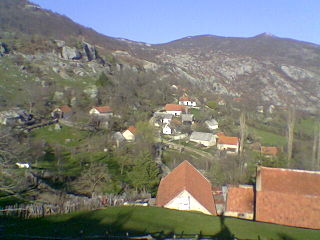 W
WAfter the Kingdom of Yugoslavia was invaded by the Axis powers during World War II, all of Bosnia was ceded to the newly created Independent State of Croatia. Axis rule in Bosnia led to widespread persecution and mass-killings of native undesirables and anti-fascists. Many Serbs themselves took up arms and joined the Chetniks, a Serb nationalist and royalist resistance movement that conducted ineffective guerrilla warfare against the occupying Nazi forces. On 12 October 1941 a group of 108 notable Muslim citizens of Sarajevo signed the Resolution of Sarajevo Muslims by which they condemned the persecution of Serbs organized by Ustaše, made distinction between Muslims who participated in such persecutions and whole Muslim population, presented information about the persecutions of Muslims by Serbs and requested security for all citizens of the country, regardless of their identity.Bosnia was the geographical mother of the partisan movement, providing ample space amongst its mountains for training and development.
 W
WIn June 1941, Serbs in eastern Herzegovina rebelled against the authorities of the Independent State of Croatia, an Axis puppet state established during World War II on the territory of the defeated and occupied Kingdom of Yugoslavia. As the NDH imposed its authority, members of the fascist Ustaše ruling party began a genocidal campaign against Serbs throughout the country. In eastern Herzegovina, the Ustaše perpetrated a series of massacres and attacks against the majority Serb population commencing in the first week of June. Between 3 and 22 June 1941, spontaneous clashes occurred between NDH authorities and groups of Serbs in the region.
 W
WThe Blessed Martyrs of Drina are the professed Sisters of the Congregation of the Daughters of Divine Charity, who lost their lives during World War II. Four were killed when they jumped out of a window in Goražde on 15 December 1941, reportedly to avoid being raped by Chetniks, and the last was killed by the Chetniks in Sjetlina the following week. The five nuns were later declared martyrs and beatified by Pope Benedict XVI on 24 September 2011.
 W
WA massacre of Croat civilians was committed by local Serb rebels on 27 July 1941 in the village of Bosansko Grahovo.
 W
WThe Drvar uprising was the World War II uprising of the Serb population of Bosnian Krajina. Italy supported it, both politically and in arms, in its struggle against the fascist puppet state of the Independent State of Croatia between 27 July and 26 September 1941.
 W
WKruščica was a concentration camp established and operated by the fascist, Croatian nationalist Ustaše movement near the town of Vitez, in the Independent State of Croatia (NDH), between August and October 1941, during World War II.
 W
WThe Kulen Vakuf massacre was committed during World War II by Communist-led Yugoslav Partisans and groups of non-communist Serbs, killing 1,000 to 3,000 Muslims and Ustaše members in early September 1941 in Kulen Vakuf, part of the Independent State of Croatia. The local Ustaše had previously massacred Serbs in Kulen Vakuf and surrounding villages.
 W
WThe Prebilovci massacre was an atrocity and war crime perpetrated by the Croatian Ustaše in the Independent State of Croatia during the World War II persecution of Serbs. On 6 August 1941, the Ustaše killed around 600 women and children from the village of Prebilovci, Herzegovina, by throwing them into the Golubinka pit, near Šurmanci.
 W
WThe Trubar massacre was a massacre of Croatian civilians committed by local Serb rebels on 27 July 1941 in village Trubar in Drvar municipality Independent State of Croatia. It was one of a number of massacres in the southwestern Bosnian Krajina during the Drvar uprising and Eastern Lika.